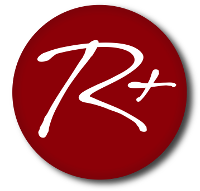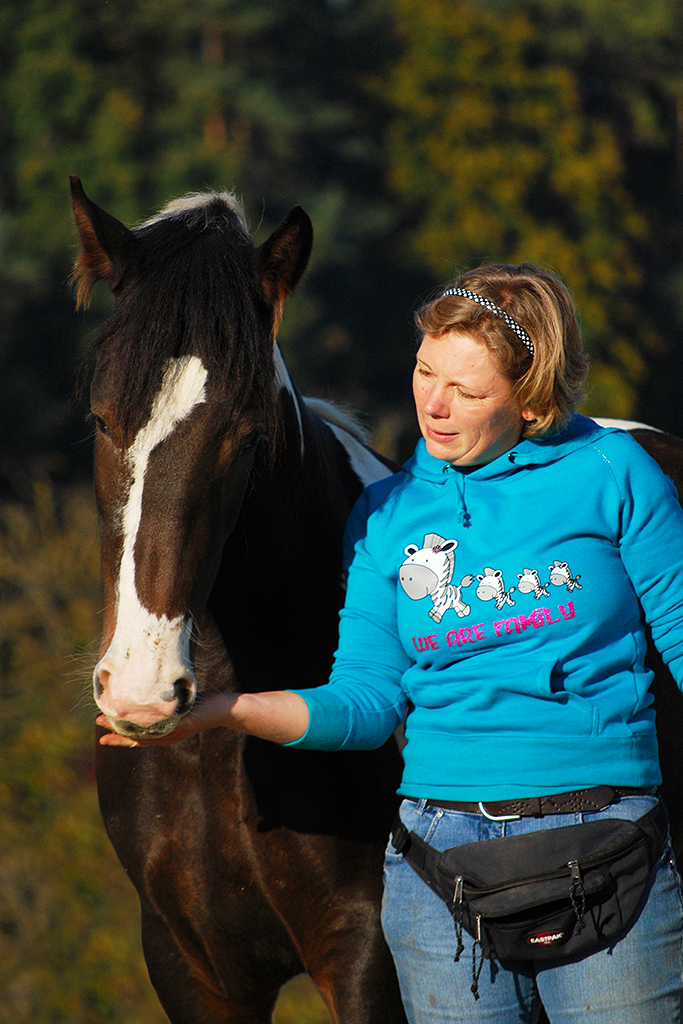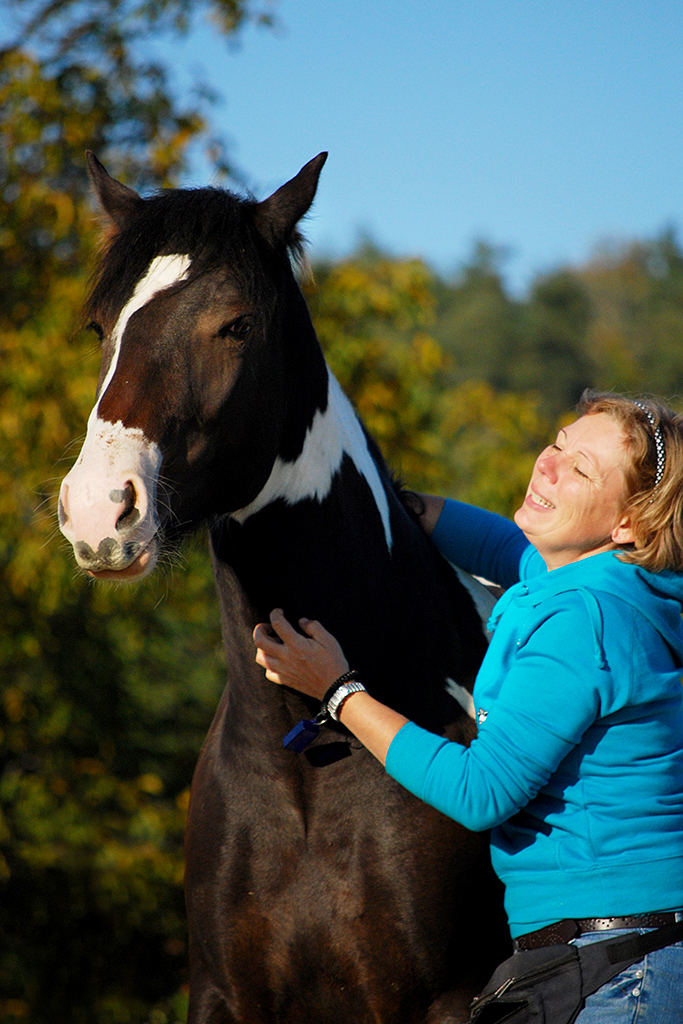Foal training with Chaba
The beginning…
Thanks to positive reinforcement, the start into life is a motivating experience for a young horse right from the start. Basic tasks the horse needs to learn such as going on a leash, lifting the hooves or putting on a halter are as much a topic in this process as are tasks involved in further training like understanding a marker signal or remaining calm in the presence of treats. The little ten month old riding pony Chaba, an Arabian mare, shows her human Lea what and how a foal prefers to learn. Chaba already knows marker signals, being rewarded with treats, and being rewarded with affectionate strokes. The following video gives us a glimpse into her horse kindergarten:
Subtitles available: German and English
Rewarding with affectionate strokes is essential
In general, foals love to be stroked. They will likely enjoy being touched by humans all through their lives if they learn shortly after being born, like little Chaba in our example, that being touched by a human being is something positive. They particularly learn to enjoy our affectionate strokes if we aim to discover the individually favorite parts for stroking on a foal’s body. These favorite parts can vary from season to season, sometimes they prefer a belly rub when they change coat, and next time they most enjoy when we pet their docks. For example, Chaba prefers a good scratch of her buttocks at the moment. It is equally important to adjust one’s amount of pressure because some foals like rather gentle strokes while others enjoy more pressure. We aim to find as much space to enjoy as possible in our daily lives. Therefore, we do not abruptly stop such a cuddling session but slowly decrease the intensity before we finish for the moment.
Free work
We can also practice free work with foals in an enclosed area. Training without a halter and without lead directly shows our own mistakes, and we additionally receive important feedback about the foal’s ability to focus, and about the stress it experiences in specific situations. Most importantly, the foal is free to move in its own pace and to return to the herd at all times. In general, the first lessons of free ground work with foals are to follow freely in walk, to come to a swift halt from walking, to walk slightly backwards, and to turn in both directions.
Training with Chaba
With Chaba we train as signal for the respective lesson to mirror the human being’s body language. So, Chaba learns to follow Lea in the given speed, and to stop whenever Lea stops. Chaba’s intuitively correct reaction is frequently marked with a click, and rewarded with treats. Handing over the treats in a calm and relaxed manner is of particular importance in this early phase of a horse’s life. The treats should not be seen as reason to become more and more excited but should be received as gifts. So, it is really important to repeatedly monitor the facial expressions, the muscular tension and the foal’s general body language in order to check the internal condition, and perceive possible stress as early as possible. During the course of this lesson Chaba is mostly in a calm and relaxed mood; she is attentive but not overly excitable.
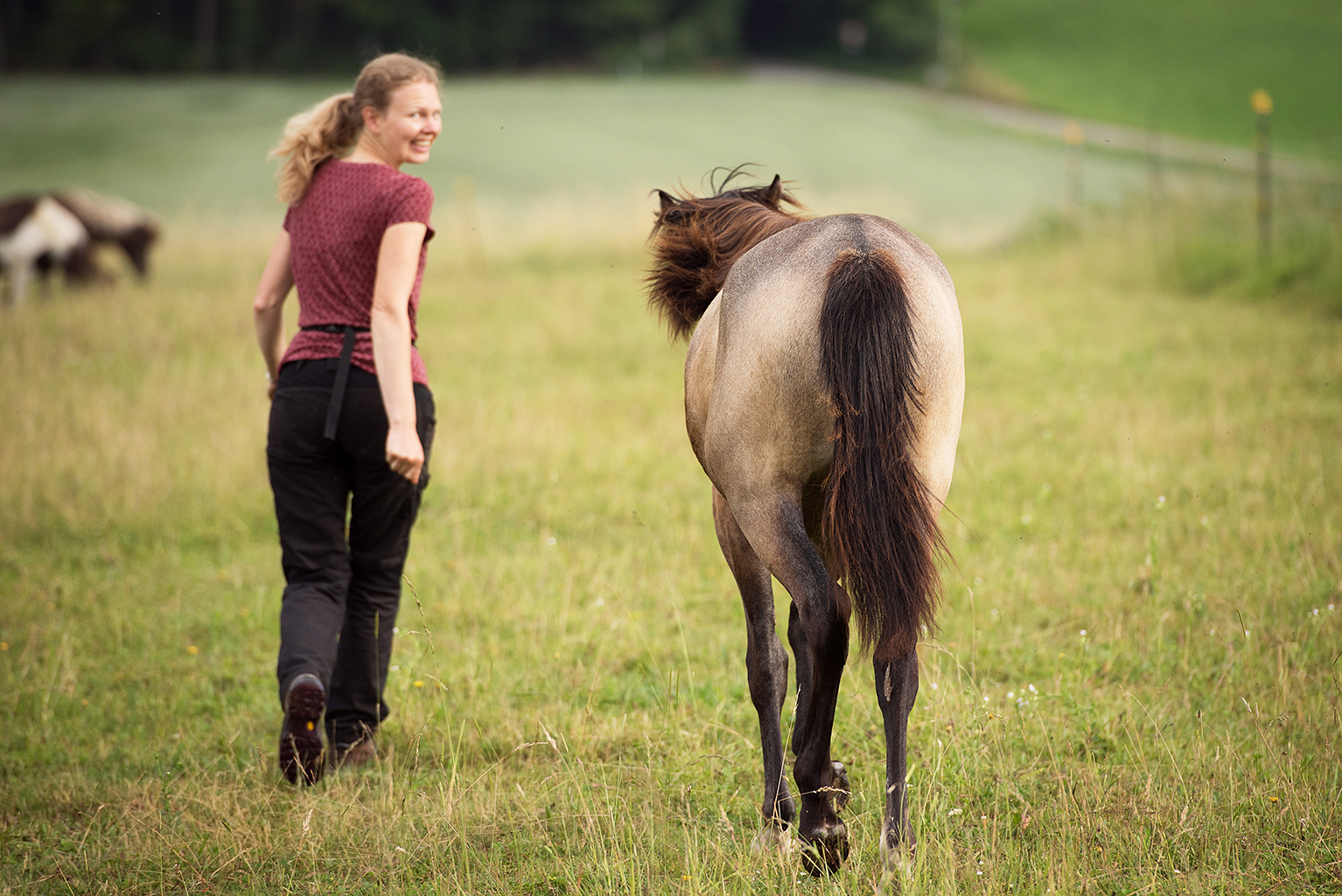
Observe growth spurts
Foals grow continuously; therefore, it is important to observe how a foal perceives its own body, and how exuberantly it moves. It is especially important to adjust the length of one’s stride to that of the young horse and not the other way around. Due to growing, horses are not balanced very well, and they have trouble keeping their balance while simultaneously having to adjust their pace to others. So, it is equally hard for Chaba to move slower than her stride suggests as it is to follow at a basic speed that is too high for her. She will only be able to easily and calmly follow her partner if the pace reflects her actual length of stride. Furthermore, this is also a good opportunity to casually work on standing freely, and to use the naturally occurring breaks between movement sequences to deliberately lead the foal into turns with treats.
Side note – Off track
High value point – the strongly reinforced spot
The high value point is more than a specific location little Chaba associates with positive experiences. The whole life of a horse is full of impressions, relations, and situations that are perceived as pleasant and desirable, and that encourage the individual to repeat those experiences. We all know this mechanism from ourselves, and we all have these special spots on our social landscapes; we enjoy being close to our friends, we long to return to a great holiday, and there might be no better place to be than on the back of our favorite animal. Yet, these strongly reinforced “spots” also have their negative counterparts. Not many look forward to the next appointment with the dentist, or to filing the next tax return form for instance. Every situation we do not face neutrally is located, either positively or negatively, in our minds. So, when dealing with horses we are on a constant journey towards strongly reinforced spots of all flavors, and we can charge potential spots with positive significance or change the significance altogether.
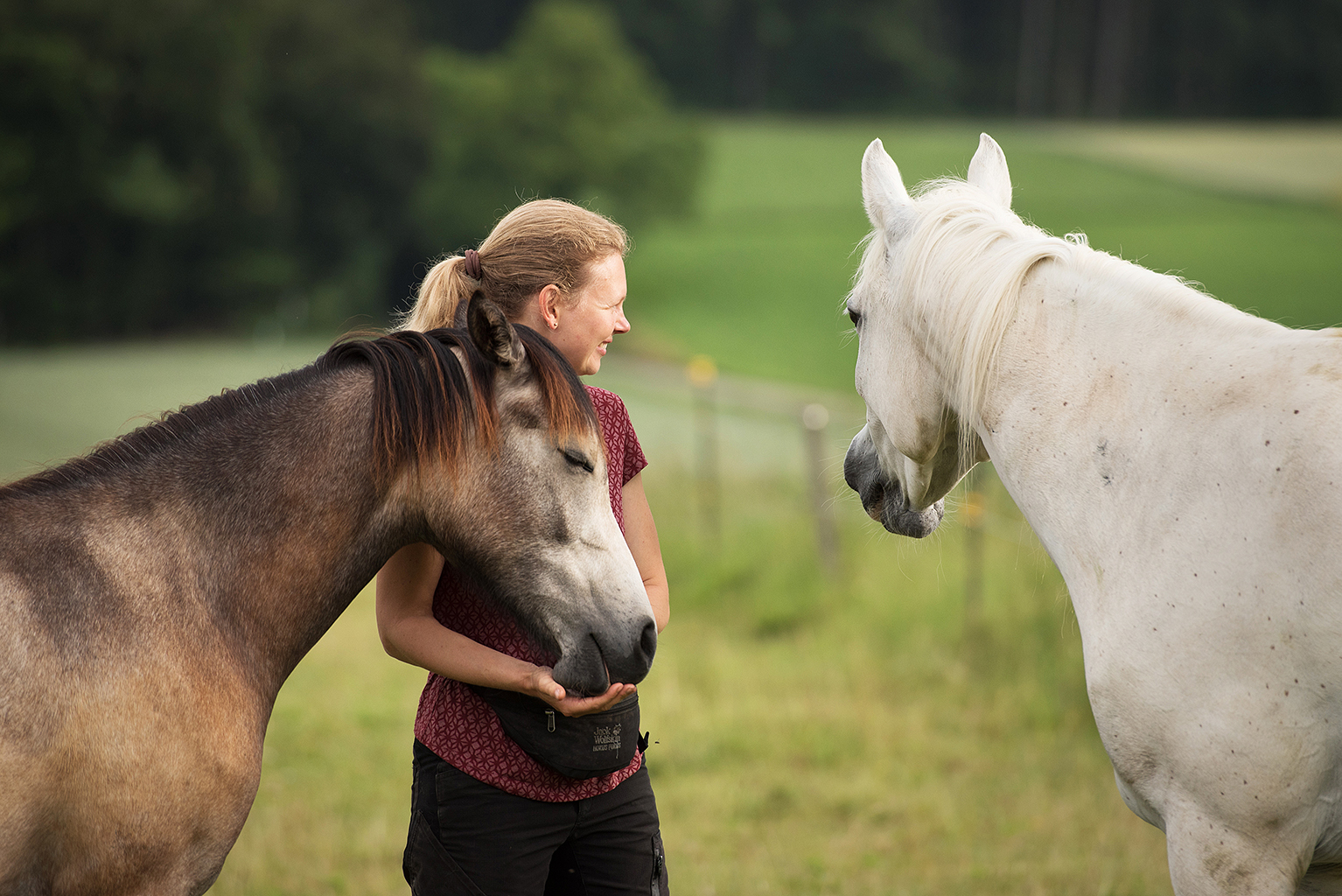
Get to know the ground target
The mat serves as ground target, and thus becomes a strongly reinforced spot that allows Chaba to orient herself. Furthermore, the mat will be established as recreational area later on. To reinforce the spot we reward Chaba whenever she positions her front legs on the spot. Attention: This is a frequent source for timing mistakes! For example, we click shortly after the horse paws the ground. This might easily reinforce not only the spot but also the pawing which then manifests itself ever more intensely. So, it is extremely important to mark as many really correct successful moments as possible, and to simultaneously and discreetly change one’s position with regard to the foal and the ground target. In general, a first change of position can easily be executed when the hand holding the treat touches the horse’s mouth. Bit by bit, we then add casually touching the whole body of the horse into training. Moreover, it is also very important right from the start to include into the lesson calling the horse away from the ground target, and to reward the corresponding behavior. This is to prevent training a horse that reliably stands on the ground target but refuses to step down from it; thus such a strongly reinforced spot is always both, a blessing and a curse.
Marlitt Wendt & Conny Ranz

